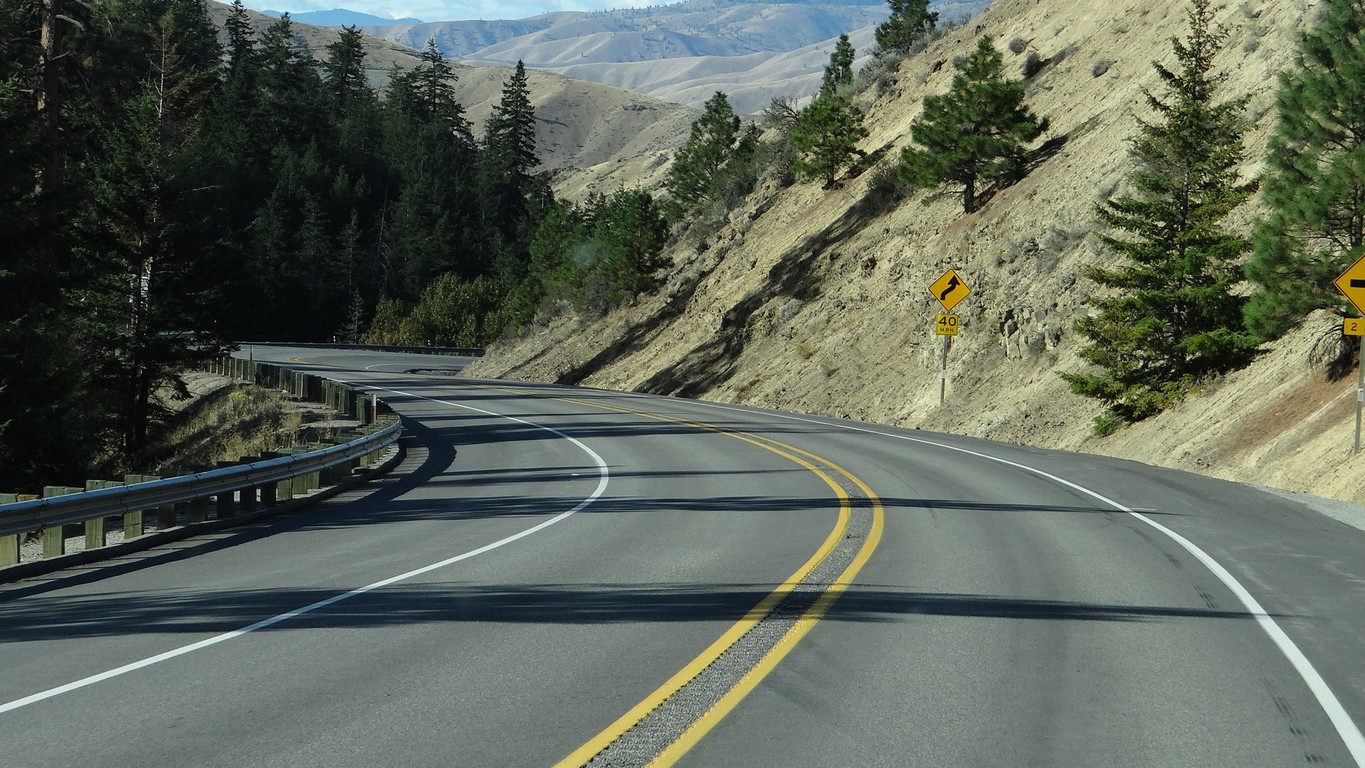
The dry plains of Eastern Washington give way to the Cascades. Therein lies the cause of this dry area. The rains hit the mountains and drop most of the rain on the west side of the peaks leaving little for the East.

There is beauty here. We will eventually climb up over 4,000 feet.

Midway, sits the small town of Douglas.

We take a rest stop here and I see my first ever bright, purple roof. I like it!

This old ad has been repainted on an old barn. I like it, too.

Once over the summit, it is down,down,down on curves and hairpin switchbacks.

Of course Jim does the driving so I get to enjoy the scenery and it is a beautiful drive, this Highway 2.

Below us is Wenatchee. The apple capital of the world. Their Washington Apple Commission Visitor Center was closed on Saturdays. The area is the biggest city in the county, the county seat, and part of the power buckle, referring to dams above and below Wenatchee. It is named after the Sahatpin Indian tribe. Wenatchee means - at the source of the river-. They grow and ship pears, cherries, and apples. We saw signs for Pickers Wanted, Por Favor.

Jim made an appointment to have the vehicles serviced at Anglers Auto Service.. Across from Anglers is Dustys Used Cars. His sign is hard to miss.

We ate lunch, and read while the work was done. I have a friend, Pam Rousey, who was raised here, if memory serves me. I remember a lovely little circus we saw while camped at a Thousand Trails that was from Wenatchee. Pretty country, great river and we had cool weather with a constant breeze.

We moved on to nearby Cashmere. The old part of town is preserved and attracts tourists who enjoy the shops and atmosphere.

Cashmere's large complex of a museum and pioneer village was open. The mastodons roamed this part of the country. The Indian artifacts part of the museum was off-limits to cameras. Part of the collection was donated by a local collector. The rest came from the Department of the Interior. Well worth a visit. The Indian History is well done with pictures of the various personalities that imprinted this land.

An item I've never seen is this Indian throwing stick. Kind of tricky to figure out how it worked from in front of the glass case.

I'm ever picking up pretty rocks and boy do they have them. About four cases of them one with beautiful petrified wood.

Some great western paintings by Walter Graham.

Another.

A room full of stuffed birds. What was engaging about the exhibit is the explanations and drawings of how the feathers work to accomplish, flight, gliding as in the raptors diorama, the upward movement as opposed to the downward movements,etc. Interesting.

In the community exhibits, another item I'd never seen before. A bank's timed lock and alarm.

The Pioneer Village was made up entirely of log buildings. All are furnished though you can only see the insides through wired barriers. About 20 buildings, all were moved to the site. Nicely done, except for the wire barriers. But,then the buildings were smaller than other villages like this we've seen.

It was interesting to me to see the various modes of log construction. This building is a two-story hotel.

The upstairs held three beds, but only two were open to a photo through the wire. All in all, an enjoyable visit.
We camped at a an American Legion next to an apple packing plant. The enormous boxes of apples being trucked to...? Maybe a train car;;;? The Legion wasn't open.
No comments:
Post a Comment